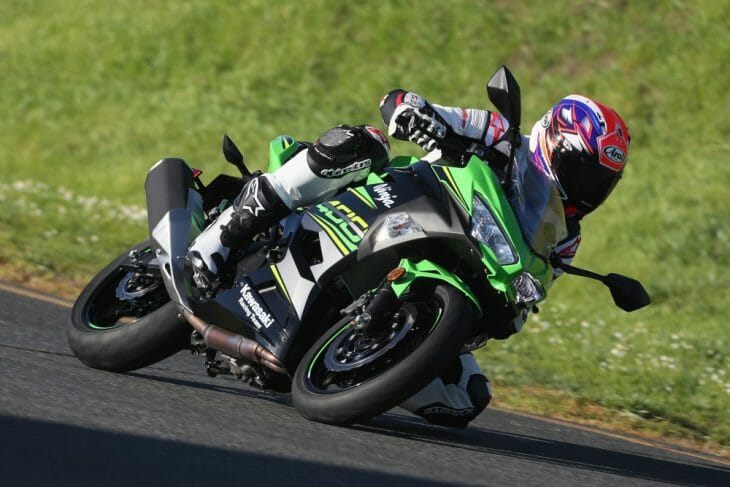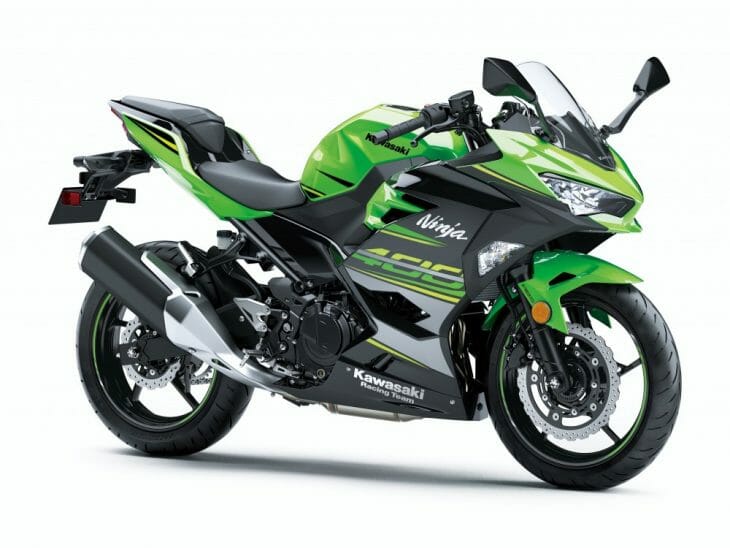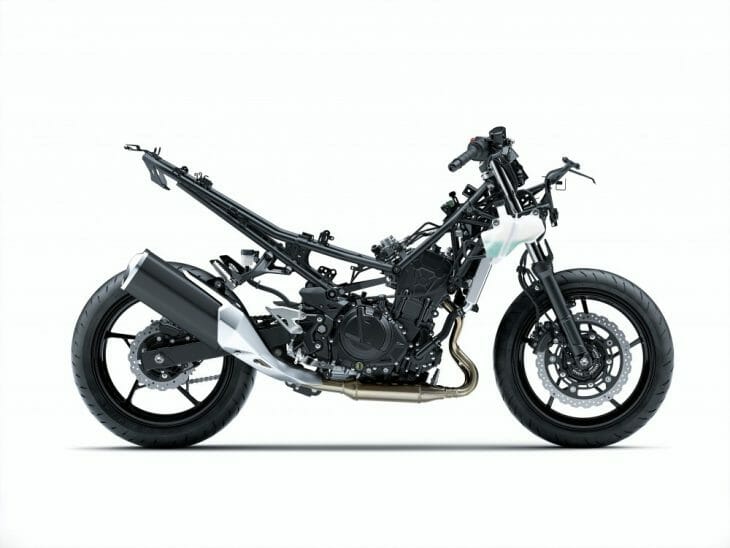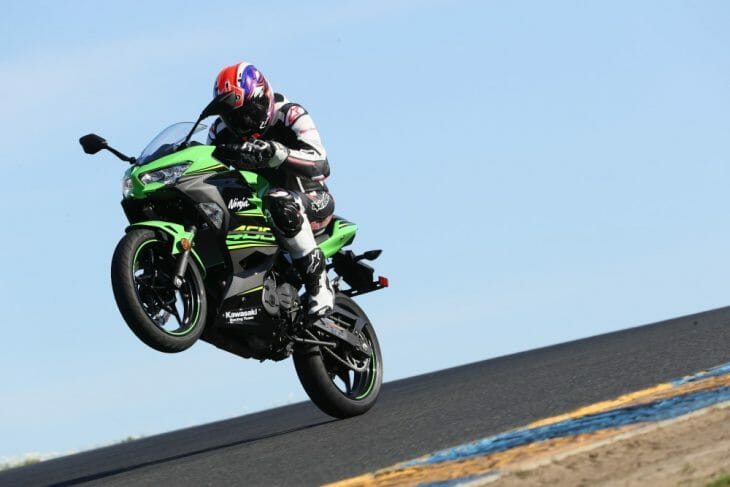2018 Kawasaki Ninja 400 First Impressions—Kawasaki has been one of the dominant players in the junior supersport segment, having enjoyed incredible sales and racetrack success with the Ninja 250 and Ninja 300.
For 2018, the 300 becomes a 400 and is now the lightest, most powerful machine in the class, with 45hp at 10,000rpm on tap from the parallel-twin cylinder engine.
We have just finished a two-day test on the new Ninja 400 around the hills of Petaluma, CA, and the glorious confines of Sonoma Raceway and will have a more in-depth review and video coming next week in Cycle News but, for now, here are some of the standout traits of the new machine.

The engine is superb
It’s common knowledge that bigger engines make more torque but it’s quite surprising just how much mid-range torque the Ninja 400 puts out. From 5000-9000rpm, you have plenty of grunt on tap in the first four gears, making this a much better proposition for street riding than the Ninja 300 was.
This extra capacity also makes the bike much more enjoyable on the track. You still have to ride the Ninja hard on a circuit to get optimum performance and lap times, but the new motor is a little easier to use compared to the 300. It also sounds awesome on full noise at Sonoma!

I feel now this is as fast as the junior supersport class needs to be. The 400 has an excellent mix of usable torque and racetrack performance, so hopefully, the manufacturers cap the capacity at 400 (not talking to the Honda CBR500R, which suffers weight and power penalties when racing). Who remembers the Aprilia RS250 Cup? The Ninja is not far from the performance of those weapons (certainly won’t be when put in race trim).
Chassis is a good base
The Ninja 400 is 19.7lb lighter than the 300 at 362 curb, and just like going to the gym, less weight means more agility! The 400 is an absolute blast in corners and the chassis will make a great base for racing, especially when you upgrade the unadjustable front suspension and preload adjustment only on the rear shock.

The handlebars have been moved 15mm closer to the rider, which can make the riding position a touch cramped if you’re a tall rider (over six feet tall). The front brake also sports a 20mm larger front disc for extra stopping power, and for the most part, didn’t fade as much as I thought it during the track sessions at Sonoma.
Incredible value for money
The Ninja 400 starts at $4999 for the non-ABS version, with the bike we rode an extra $500 due to the Kawasaki Racing Team paint scheme. That represents incredible value for money, considering the Ninja 300 and Yamaha R3 both have the same MSRP, and neither have the performance on tap the new 400 does.

It’ll be interesting to see what, if any, modifications the teams who race this in MotoAmerica this year will need to do to the 400 because if it’s allowed to race with no restrictions, simple mathematics dictates this bike will be the one to beat based off engine performance alone.
Stay tuned for the full review coming next week.
